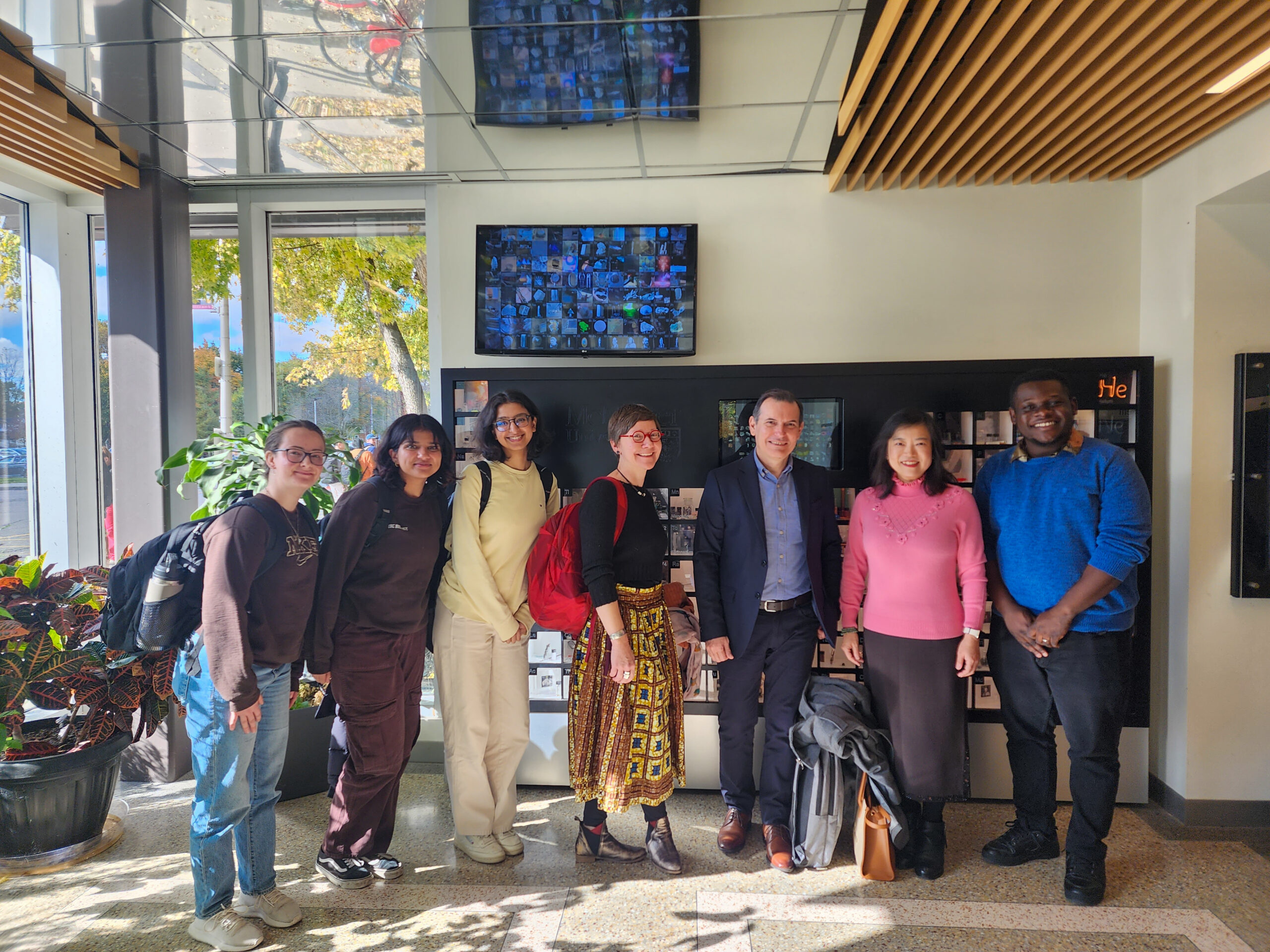Pollution, Power, and Protest: Unpacking Environmental Racism from Africville to Wet’suwet’en

The above image features Dr. Ingrid Waldron presenting at the Global Health Seminar on Thursday October 3, 2024. The following Blog Post was written by Global Health MSc Student, Wania Khan.
In a world where clean air and safe drinking water should be fundamental rights, Dr. Ingrid Waldron exposed a national crisis during her seminar, From Africville to Wet’suwet’en: The Health Effects of Environmental Racism in Indigenous and Black Communities in Canada. Reflecting on her expertise as an advocate, health researcher, and HOPE Chair in Peace and Health at McMaster University, Waldron illustrated how systemic inequalities force marginalized communities to bear the brunt of toxic pollution and its devastating health impacts.
During her seminar, Waldron explained that environmental racism manifests through the imposition of pollution and toxic waste on communities with limited social, political, or economic power, leading to significant health disparities. These communities, primarily Indigenous and Black, are often excluded from decision-making processes, delaying the remediation of contaminated sites and perpetuating policies that overlook their specific needs. The uneven placement of hazardous facilities near these communities and their exclusion from regulatory bodies reflect a broader framework of settler colonialism that continues to define this phenomenon.
Waldron’s work further illustrates that environmental racism is deeply intersectional. It is not merely about industrial convenience but is rooted in power dynamics, where race, gender, income, and geography converge to shape political influence. Communities with less political leverage often suffer the highest exposure to contamination and pollution. As Waldron pointed out, “There’s this assumption that communities that are isolated are forgotten. They’re often invisible; they are ‘invisibilized’. For some people, they don’t seem to matter.” She highlighted how, despite the resilience and resistance of these communities, their efforts are often overlooked, underscoring that those most impacted by environmental racism are frequently the least heard.
Waldron’s seminar illustrated several case studies that prompted me to reflect on my own privilege of living without the fear of contaminated water or air. For instance, she explored the health consequences of past and ongoing environmental and colonial assaults on Indigenous lands across Canada. This includes the Aamjiwnaang First Nation, which is surrounded by 60 petrochemical facilities, and the Grassy Narrows First Nation, where mercury poisoning has persisted for decades despite government interventions. Wardon also discussed notable resistance efforts, such as the Wet’suwet’en First Nation’s fight against a multi-billion-dollar pipeline and the Sipekne’katik First Nation’s successful seven-year struggle to halt a brine discharge pipeline. These stories reveal the power of grassroots mobilization in the face of systemic oppression.
Waldron also provided historical context on Black communities in Nova Scotia, particularly Africville, a community displaced in the late 1960s for industrial development. Residents were relocated to areas like Uniacke Square, where they faced environmental hazards that led to high rates of cancer and respiratory illnesses. Advocates like James Desmond from Lincolnville and Louise Delisle from South Shelburne continue to raise awareness of ongoing health disparities in their respective communities and the lack of response from local authorities. Waldron quoted residents who lamented, “We live near the dump, and we are the dump,” highlighting how environmental racism not only affects physical health but also contributes to mental health challenges and social stigma.
One striking example was a conversation with Louise Delisle, who shared that nearly 97% of her community suffers from cancer, including rare forms such as multiple myeloma, due to a dump nearby. Despite these alarming figures, local authorities dismissed their concerns, accusing them of playing the “race card.” Waldron underscored the importance of listening to community voices and taking their lived experiences seriously. Louise and others are now pursuing a human rights case in Nova Scotia to address these environmental injustices.
Waldron’s commitment to support these communities and advocate for policy change led her to launch the ENRICH Project. This initiative helps to raise awareness for this issue through multimedia campaigns, conducts interdisciplinary research, and provides training that empowers communities to monitor environmental hazards. The ENRICH Project has also played a key role in advocating for environmental racism and justice legislation in Canada. As Waldron stated, “In order to get people to act, they first have to empathize. In order for them to empathize, they first have to understand.” This prompted her to write the book, There’s Something in the Water, which was later adapted into a Netflix documentary in 2019, which explores environmental racism in Nova Scotia and amplifies the voices of Black and Indigenous communities fighting against industrial pollution.
This lecture was not only an eye-opener on the urgent and pervasive issue of environmental racism but also a call to action. Waldron’s work emphasizes the importance of listening and amplifying the voices of marginalized communities when fighting systemic injustices. As we confront the intersections of race, health, and the environment, it’s clear that addressing these challenges demands a comprehensive approach centered on empathy, understanding, and meaningful policy change. Recognizing the disproportionate environmental burdens on Black and Indigenous communities allows us to push for reforms that promote equity and justice. Through her ENRICH Project and the powerful narratives in There’s Something in the Water, Waldron reminds us that challenging the status quo requires collective responsibility. Together, we can build a future where everyone has the right to a healthy environment and equal access to essential resources, fostering a more just and sustainable society for all.
Student BlogRelated News
News Listing

November 12, 2024

November 5, 2024

October 3, 2024
